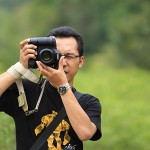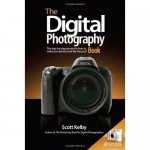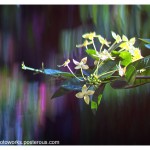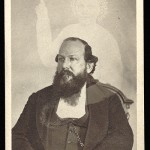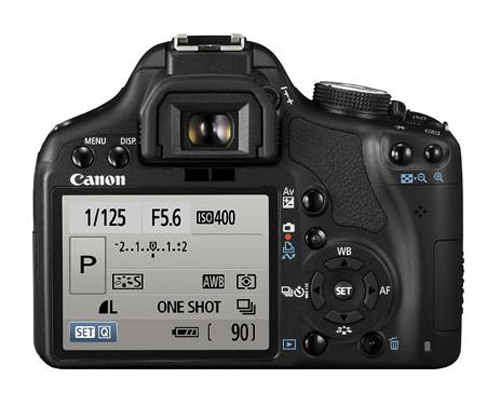
Believe it or not, there are still many owners of digital cameras that still do not understand the basic settings of their cameras. In result, they only rely on the Auto mode when shooting and accept what they come up with as adequate. Yet we know that the camera has a lot of settings and an error in setting may result in a disappointing picture. This may affect the willingness of some people to experiment various settings on their cameras. True, the Auto mode on cameras these days are quite smart in making a safe photograph result. But still, aren’t you curious in what your camera can optimally do? At the least we should familiarize ourselves and at least have tried every basic settings on our cameras so we’ll know what needs resetting when faced with different situations.
Though it may seem trivial, the following settings will aid you in getting better photo results if set correctly. For a more detailed explanation, consult your camera’s manual because what I’m posting here is more general in nature:
Image Size (Sensor Resolution)
Photographs or digital formatted images are measured in pixels and is related to the resolution of the camera’s sensor. Sensor resolution signifies the maximum photo size that can be produced (stated in mega pixels). Cameras these days have underwent major increase in pixel count on their sensor chips. And as we know, the higher the resolution the more detailed the resulting image.
Whatever the resolution a digital camera has, there is usually these choices of resolution settings:
– Maximum resolution (Large): With this setting, the camera will produce images with full resolution capacity and will inevitably produce large-sized photo files. Use this setting when you’re taking photographs of something you deem important, rich in detail, photos you plan on doing a lot of cropping with, or ones you plan to print as large sizes.
– Medium Resolution (Medium): The camera will produce medium-sized photos that are still quite detailed but not too big in file size. This setting is suitable for everyday shooting.
– Low Resolution (Small): If you only need small-sized photos to be displayed on the web and you do not plan on printing or cropping it, this low resolution is handy to use. It saves lots of disc space.
Image Quality (JPEG Compression)
Many people misunderstand the concept of resolution. They wrongly think that picture quality is determined by the resolution, when in reality, resolution states the photo detail. The quality is really determined by the level of JPEG compression,which can be manually set. The higher the JPEG compression, then the lower the photo quality will be. This is because the compression process is “lossy” in nature, which means it lowers quality. Low quality photos will look pixelated because of high compression process, but will in return require very low-sized files. Generally, quality settings found on the average digital camera is as follows:
– High Quality (Super fine, best, or high quality): If you need high-quality photos with minimal visible pixels, then choose this low-compression setting. This in return, however, will have a large file output (around 4 to 5 MB per photo).
– Medium Quality (fine, medium, or better quality): Suitable for everyday use, with no visible pixels, yet not too large in size.
– Basic Quality (Normal, good, or basic quality): Choose this option in emergency conditions (e.g. using a memory card with a low capacity, or there’s little space left in your memory card). In this setting, the JPEG compression is very high making output photos very small in size. This setting, however, will cause compression effects such as highly pixelated photographs.
Sensor Sensitivity (ISO)
ISO in digital photography indicates how sensitive the sensor will be to light. Each camera has a base ISO (or lowest ISO) which is generally between ISO 80 to ISO 200. At the lowest ISO, the sensor provides low-noise images, which makes this setting the favorite among most people. But the different ISO settings are there to provide convenience for us. So therefore, we should understand when to use the lowest ISO and when we would have to increase the ISO setting.
– Low ISO (ISO 80 – 200) is suitable for everyday use, as long as the surround light is bright enough when shooting in daylight. Low ISO can also be chosen when we want to avoid photo noise or when we’re experimenting with slow-speed photography.
– Medium ISO (ISO 400-800) could be the compromise between sensitivity and noise. With the medium ISO setting we can get less-sensitive sensors with an acceptable noise level. Use medium ISO when the surrounding light starts to dim, or when using a basic ISO shutter speed is too slow and can potentially blur. Visible noise in this setting can still be edited using photo-editing softwares.
– High ISO (ISO 1000-6400) is an extreme increase in sensor sensitivity, which will make the sensor very sensitive to light but will also crease a high level of visible noise. Use this High ISO setting when the lighting is inadequate for the camera to get the right exposure, or if we want to get a higher shutter speed. On most digital cameras, high ISO will generally result in photos with intense noise levels and will generally be inadequate for printing.
Exposure Compensation (Ev)
This particular setting is sometimes understood by many as the control of the brightness aspect of a photograph, though a more precise understanding is that Ev is how we instruct the camera to set its zero exposure. The Ev setting is the basic setting of digital cameras ranging from Professional grade cameras to cellular phone cameras, and in fact this setting is very useful to overcome any undesired brightness or lack there of. The default Ev value is 0 (zero) where the camera tries to find the best shutter and aperture value of the measurements of current lighting conditions (metering). On the 0 value of Ev, the bright areas (highlights) and dark areas (shadow) is usually in a balanced state, thought each camera have slightly different characteristics. In certain conditions, there are times when the camera’s metering does not give the desired results, whether it be under or over exposed.
When that’s the case, we can toggle the Ev values in the direction of:
– Positive Ev (ranging from +1/3 Ev up to +3 Ev) is set if we want to make the darker parts of the photo bright, although there is a risk of blowing the bright. Usually in high contrast areas, such as the under a blazing sun or in cases of backlighting, the photo needs to be compensated towards the positive.
– Negative Ev (ranging from -1/3 Ev to -3 Ev) is set if we want to darken the bright areas, like when photographing sunsets. Without the decreasing of the Ev, a sunset photo will look too bright and the beautiful moment of the sun setting will not be recorded properly.
Flash Mode
Flash on the camera seems pretty trivial because it only serves as additional light. But in certain situations users often overlook the flash settings during shooting. Generally, the flash setting is left at the Auto mode where the flash will trigger only when the atmosphere is quite dark. Though often we need flash during the daytime, and there are also times when we shouldn’t use the flash at nighttime. That is why the basic settings of the camera flash need to be understood. These settings are as follows:
– Auto: Turns on automatically when in dark surroundings. Avoid the Auto mode as much as possible.
– Flash On: Always triggers at every shot. Use this setting when you want to photograph with the flash, like when there is no light source whatsoever except for the camera flash, or during the day when the object is darkened by shadows. Flash during daytime can also be used to fight backlight.
– Flash on plus red-eye: Same as above, but the flash will light up twice to prevent red eye. There are people that use this setting without understanding its use, so they use this setting every time they photography, day or night, when in fact this can cause them to lose moments because there’s a pause between the flashes. Besides, the frequent triggering of the flash will make the battery run out more quickly.
– Flash off:The opposite of flash on, the flash off setting of course prevents the flash to trigger during photographing. First, use this setting when the surrounding lighting is adequate. Second, turn off flash when you need to shoot with available light (or natural light) like when photographing candles, night shoots or shooting in a spacious room. Third, this setting is handy when the use of flash is prohibited, such as during concerts or in houses of worship. Fourth, do not use the flash when it will cause light to reflect from the object such as shooting through a car window, shooting fish in an aquarium and shooting shiny objects.
White Balance
Lastly, the basic setting often overlooked is the setting of the white balance color. Common reasons why not many likes to try and experiment with this setting is because at the Auto WB setting, the resulting photo is satisfactory and the color are rarely missed. But are we just going to surrender to the Auto WB mode when faced with different white lightings? In our environment, there are many sources of white light, such as the sun, fluorescent lights, and incandescent lights, to flashes. If the camera misinterprets in recognizing the light source, then the resulting photo will appear bluish or reddish, which will ruin the mood of a photograph. If there are WB presents available on your camera for those different lighting, try to use the appropriate setting.
Those are the basic settings of digital cameras that you need to familiarize with, understand, and try out. There are still plenty other more advanced settings, but by optimizing these basic settings, we can keep taking satisfying pictures that will delight any viewer.
